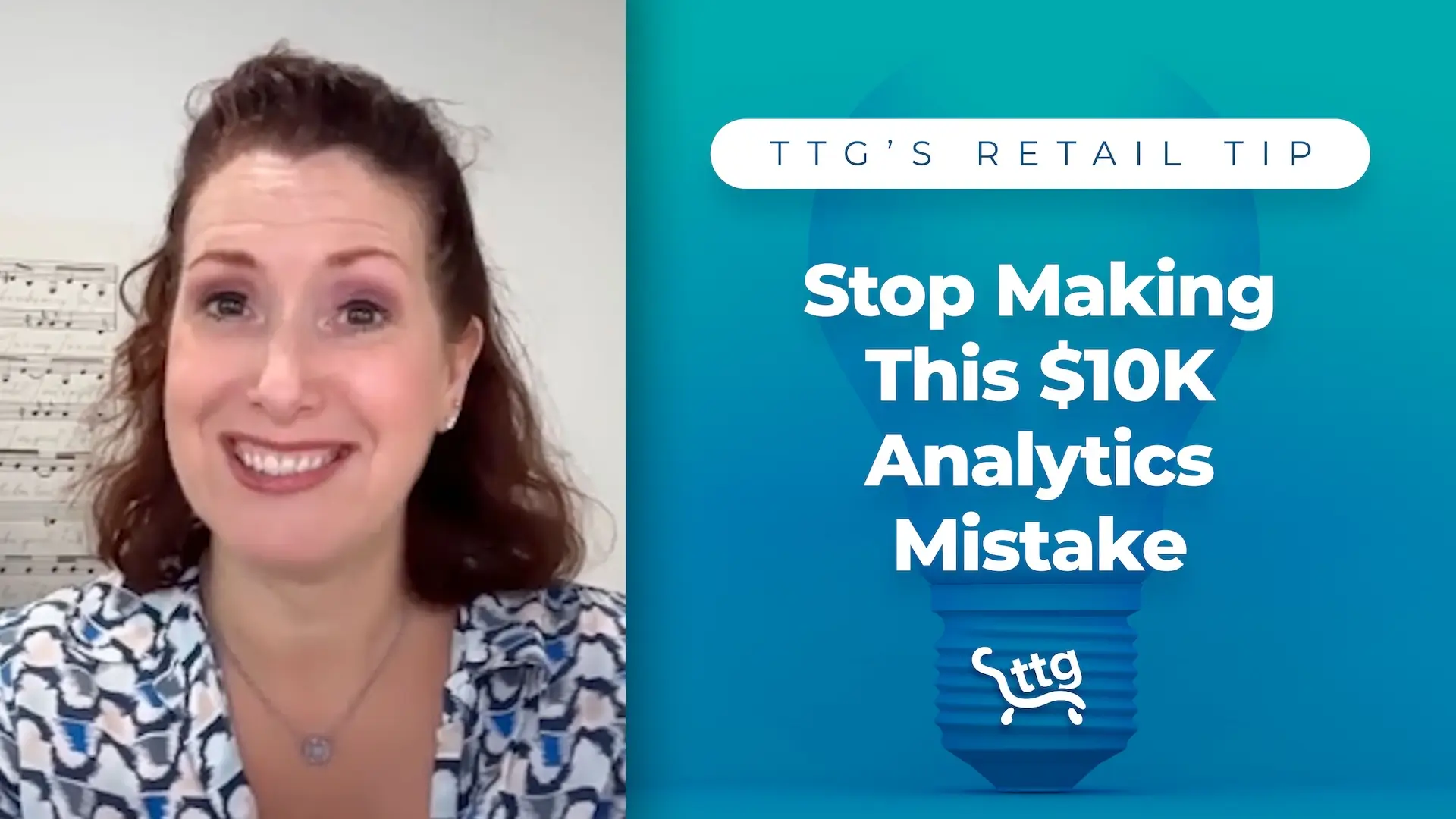Key Takeaway:
Observational data focuses on understanding customers’ emotions and intentions.
This data lets small business owners explore why and how their customers do what they do.
The best way to use observational data is to combine it with objective data.
While big data focuses on numbers and trends, observational data — often referred to as “thick data” — offers a more human-centered approach. By observing customer behaviors and patterns, small independent retailers can uncover meaningful insights to better understand and connect with their audience. Observational data is your opportunity to look beyond spreadsheets and build emotional connections with your customers. Let’s explore what observational data is, share some examples of what it looks like, and provide some tips for incorporating it into your marketing data mix.
“Observational data, or thick data, captures the nuances of human behavior, preferences, and emotions. It helps you understand the stories behind your customers’ actions.”
– Technology Therapy® Group
What is Observational Data?
Observational data, or thick data, captures the nuances of human behavior, preferences, and emotions. It helps you understand the stories behind your customers’ actions. According to recent data from Salesforce, 65% of customers expect companies to adapt to shifting changing needs and preferences, but as many as 61% of them say that most companies treat them as a number.
With thick data, you humanize your business’s interactions with customers and give them the personalized experiences that they crave. This type of data gives you the tools to:
- Build emotional connections with customers by identifying their preferences and habits.
- Cluster your customers into meaningful segments based on shared behaviors.
- Create marketing content that resonates on a deeper, more personal level.
Thick data is essential for uncovering insights that big data often overlooks. When you observe your customers in-store or online, you gain a unique perspective that can inform both your marketing and overall customer experience.
6 Examples of Observational Data in Marketing
Thick data is all around you. Here are some practical examples, especially for small retail stores:
1. Customer Appearance
Take note of what your customers wear. For example, in a jewelry store, observe if they wear multiple bracelets, earrings, or rings. This insight can help you recommend products and tailor promotions.
2. Parking Lot Trends
If your store has a view of the parking lot, observe the types of cars customers drive. Do certain brands or colors dominate? These details can offer insights into your target demographic.
3. In-Store Behavior
Watch how customers interact with your store layout. Which displays catch their attention? Do they linger at certain sections or products?
4. Preferred Styles
Pay attention to customers’ style choices, such as bold patterns versus minimalist designs. These patterns can guide how you present your merchandise or even design your marketing visuals.
5. Customer Group Dynamics
Often, people shop in groups with shared styles or preferences. Observing these connections can help you create marketing that appeals to their broader social circle.
6. Shoppers’ Conversations
Value what your shoppers have to say, whether its via online messaging or reviews, or in-person when they’re visiting your store. You’ll learn a lot about their shopping preferences and purchase intent. As Ross Perot famously said, “Spend a lot of time talking to customers face to face. You’d be amazed how many companies don’t listen to their customers.”
“Observational data is not just about gathering insights. It’s about building relationships and emotional connections with your customers.”
– Technology Therapy® Group
Why Observational Data Matters
When doing observational data, remember that it’s not just about gathering insights. It’s about building relationships and emotional connections with your customers. Here’s why it’s so powerful:
- Segmentation:
By clustering customers based on behaviors or preferences, you can deliver more targeted and effective marketing. For example, grouping customers who frequently buy bold, statement pieces versus those who prefer simple designs allows for tailored promotions. - Emotional Connection:
People connect emotionally with imagery and messages that reflect their identity or aspirations. Observational data helps you create content that resonates on a subconscious level, strengthening customer loyalty. - Finding Lookalike Customers:
Observing your current customers provides clues about who to target next. For example, if many of your customers share similar style preferences, you can design campaigns to attract others who identify with those same styles.
As Forbes contributor Joost Van De Velde highlights, thick data can reveal the emotional triggers that drive purchasing decisions. This enables your business to create long-lasting bonds with your audience.
4 Tips for Using Observational Data
Not sure where to begin with using “thick data” to step up your business’s data game? Here are four tips to get you started.
1. Start Small
Don’t feel overwhelmed by the idea of collecting observational data. Begin by focusing on one or two key areas, such as customer appearance or in-store behaviors. Keep detailed notes and look for recurring patterns.
2. Use Tools to Organize Data
Even simple tools like spreadsheets can help you organize and analyze observational data. Over time, consider investing in a customer relationship management (CRM) system to streamline the process.
3. Infuse These Insights into Marketing
Use the data you collect to inform your marketing strategies. For example, if you notice customers gravitate toward certain styles, feature those items prominently in your ads or create social media content showcasing similar products.
4. Train Your Team
Encourage your team to adopt an observational mindset. They’re on the front lines, interacting with customers every day. Training them to notice and record details can provide valuable insights.
The Emotional Side of Observational Data
Remember, the goal of observational data is to create deeper connections with your customers. By understanding their preferences, styles, and behaviors, you can:
- Craft marketing campaigns that feel personal and relevant.
- Design in-store experiences that reflect their needs.
- Build a brand they trust and return to.
Ultimately, observational data helps you see your customers as individuals, not just transactions. And that understanding is what sets successful small retailers apart.
Making the Most of Observational Data
To get full value from your observational data, use it in combination with the objective data collected by your website, social media, CRM, POS system, and forms. This is called Smart Data and it’s what you need to level up your business.
Find a Guide to Step Up Your Data Game
Need some help collecting observational data and understanding it? Work with a TTG mentor!





